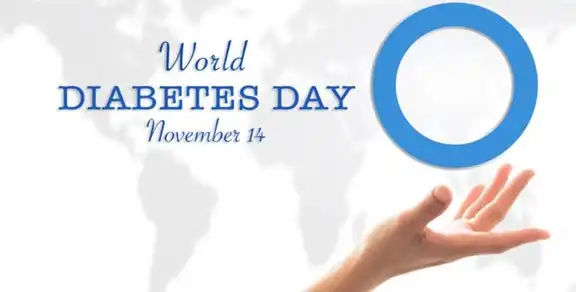November is National Diabetes Awareness Month and November 14th is World Diabetes Day (WDD). WDD was created in 1991 by the International Diabetes Foundation and the World Health Organization (WHO). November 14th was chosen to honor Canadian physician and scientist Dr. Frederick Banting, the co-discoverer of insulin. In 2006, a blue circle was chosen to become the official symbol of Diabetes Awareness Month: blue represents the sky we are all under and the circle represents unity among countries.
The 2020 focus is on youths with diabetes, one of the most common chronic conditions in young people in the United States. As of 2020, diabetes affects approximately 210,000 of youths under age 20. While Type I diabetes continues to be prevalent, an increase of Type II cases has been recorded. American Indian/Alaska Native youth have the highest prevalence of Type II diabetes compared with youth in other racial and ethnic groups in the US.
Type I (Diabetes mellitus)
A chronic, auto-immune disease formally known as insulin dependent and juvenile diabetes. Type I occurs when the body attacks the insulin producing beta (islet) cells in the pancreas. Insulin is the hormone needed to regulate blood glucose (sugar), and without insulin, glucose builds up in the bloodstream. When the body cannot use glucose as energy, it starts to break down fat for fuel, leading to ketones, which are acid buildup compounds in the bloodstream. Excess amounts of ketones can lead to Diabetic ketoacidosis (DKA). The cause of Type I is unknown but medical professionals believe it is genetic, and Type I diabetics rely on insulin injections.
Symptoms include:
- Excessive thirst
- Frequent urination
- Blurry vision
- Unwanted or unexplained weight loss
- Lowered energy
Type II
Formally known as non-insulin dependent and adult onset diabetes. Type II occurs when the pancreas makes insulin, but cells don’t respond to it, or the pancreas doesn’t produce enough insulin. Glucose stays in the bloodstream and builds up, eventually leading to the breakdown of arteries and organs. As of 2020, the annual number of youths under 20 years old being diagnosed with Type II was 5,758. There is no cure for Type II but can be maintained with losing weight, diet, exercise, and medication.
Risk factors include:
- Being overweight or obese
- Lack of physical exercise
- Smoking
- Genetics – Type II is prevalent among Native/First Peoples of the United States, African American, Latino, and Asian-American populations
Symptoms include:
- Heart disease
- Kidney failure
- Poor circulation
- Slow wound healing
- Foot, eye, and nerve damage
Gestational Diabetes
Gestational Diabetes (GD) develops during pregnancy and affects 2-10% of pregnancies in the U.S. GD affects ages 18-35 and occurs when the body can’t make enough insulin during pregnancy. All pregnant women have some degree of insulin resistance, but some have it before pregnancy. They might start their pregnancy with an increased need for insulin, which may lead to GD.
Since there are no symptoms, a complete medical history or prenatal screening determines whether someone is at risk. GD increases the risk of high blood pressure during pregnancy or having a Caesarian section, along with both mother and newborn developing Type II diabetes later in life. GD can be controlled by eating healthy foods, exercise, and taking medication if necessary.
Which Countries in the World have the Highest and Lowest Reported Cases?
As of 2019, 116 million people in China were reported diabetic. By the year 2045, diabetes is predicted to affect 134 million people in India.Worldwide, the United States ranks as number three. As of 2020, 34.2 million cases, about 10.5% of the population. Approximately 88 million adults are prediabetic, yet more than 84% don’t know they have it. The country with the least amount of reported cases (as of 2019) is Bangladesh with 8.4 million.
How are the Center for Disease Control (CDC) and Worldwide Groups Addressing Diabetes?
The CDC has set up a National Diabetes Prevention Program (National DPP), which addresses pre-diabetic adult patients to learn the risk factors and how to prevent the onset of Type II diabetes. In 2016, the CDC, the American Diabetes Association and the American Medical Association partnered with the Ad Council to create a public service announcement (PSA) campaign about prediabetes. The PSAs encourage visitors to a take a short online quiz at DoIHaveDiabetes.org. To empower patients to take control over the prevention of serious and costly diabetes complications, the CDC is working with states to improve access to diabetes self-management education and support (DSMES).
The CDC also encourages patients to explore the Division of Diabetes Translation website to learn how the CDC is addressing the world-wide concern of diabetes.
The WHO manages guidelines and programs that closely monitor diabetes cases throughout the world, especially in lower and middle-income countries.
*The price of diabetes medication can be costly. Make sure you are getting maximum savings on your prescription drugs today. Whether it be for Metformin, Trulicity, etc. rxless is here to help.

















